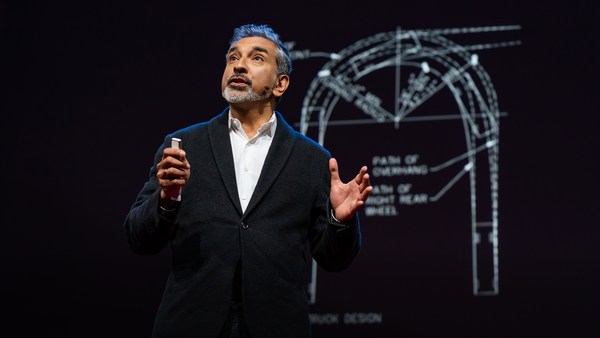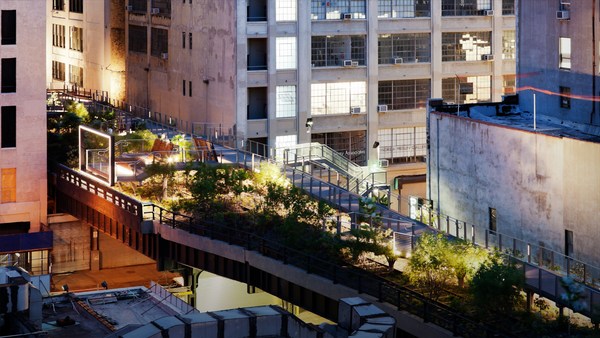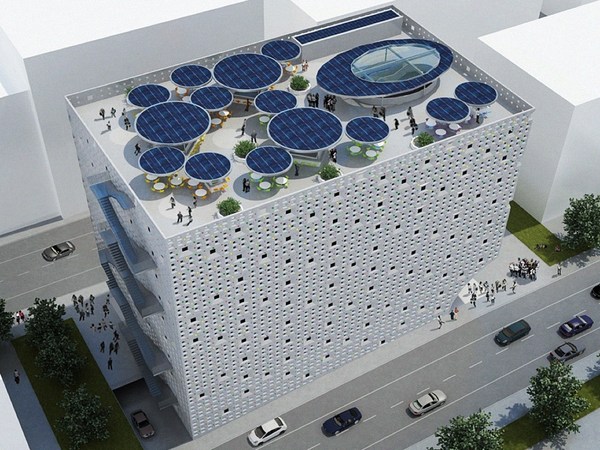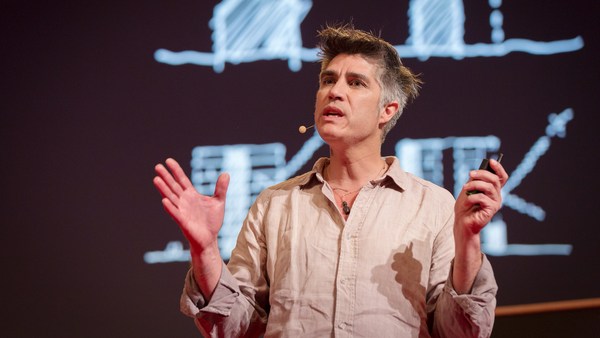So, I was born in India. This is just a small part of my big, beautiful family there. I have, actually, 50, five zero, first cousins. Most of us have a couple of kids. And so all of this leads me to believe the United Nations when they tell us that by 2100, the world will have a population of almost 11 billion people. That is, three billion more people than the planet houses today.
To house all of those people, we need to build about 2.4 trillion square feet of new built space. Now to give you a sense of scale, that is the equivalent of adding to the planet a New York City, every month ... for the next 40 years. Now I'm a New Yorker and an architect, but this scares even me. But this is not a scary talk, I promise you.
(Laughter)
I think I know what you're probably thinking, which is, "We are already experiencing severe impacts from climate change. How can the world house another three billion people? And how can their housing needs be part of the solution, rather than part of the problem?" Could new housing be carbon-negative? Meaning that it offsets or sequesters more carbon than it produces.
Now, for our big, existing cities, there is a lot of hope in clean energy grids fueled by renewables like solar, wind, nuclear and geothermal. But the fact is, we are still a ways away from getting fully clean power grids in our existing cities, where most of this population growth is going to occur. And that's true because of the problems with everything from transmission lines to the politics of nuclear energy. So, clean grids are a really important part of the solution, but they don't help us that much, right at this moment. What we can do today, what we have existing technology for, is to build net-zero single-family homes. In sunny climates in particular, solar panels work very, very well, because it's a lot of roof area, relative to very few occupants. But these things, they're hardly a panacea -- in part because they're very expensive to build, but more problematically, because they induce car-oriented sprawl. And I don't care if the cars are electric or autonomous -- sprawl is sprawl, and it leads to a loss of wetlands, a loss of forests, a loss of farms and a loss of community.
So maybe you're thinking the right answer to house our coming building boom are towers. And look, I've actually been called "Professor Skyscraper." I love a great tower. But the reality is we are very far away from developing carbon-negative towers. And the reason is, towers are energy-intensive to build and operate. They house a lot of people, which is great, but they have very little roof area to effectively use solar, and similarly, like, wind turbines at the top -- all of that stuff barely makes a dent. On top of that, most skyscrapers are built out of steel and concrete, which have a very high degree of embodied energy. Now, I hold out a lot of hope for a technology known as "mass-timber construction," which would allow us to build tall towers out of environmentally friendly and fire-retardant wood that's actually a carbon sink, but we are a ways away from widespread adoption of that technology. I also hold out hope for the idea that windows could harness solar power, but the idea that we have effective and affordable solar glass in the near future, that’s even more nascent than mass timber. So for towers to really be sustainable, we need those clean energy grids that we spoke about, but we don't have them available to us today.
So we have a paradox. How do we house all of these people, how do we build urban carbon-negative housing in a means that's technologically attainable and broadly affordable -- and do that today? Because I'm tired of talking about 2050.
(Cheers and applause)
I believe that the answer is hiding in plain sight, that there is what I call a “Goldilocks” scale that sits between the scale of housing and towers: two- to three-story housing that should actually look very familiar to most of you, because we built the most beloved parts of our cities with it. The row houses of Boston, the hutong districts of Beijing, most of the fabric of Edinburgh. What we now build in this scale are largely cheap suburban townhomes. They're banal, they're not sustainable, they're not walkable, they're certainly not beautiful. But could they provide a hint of a framework for a human-scale way of solving this problem that is great for both the climate and our societies.
This Goldilocks framework hits the sweet spot between the number of people it can house and the amount of roof area we need to provide them and their communities [with] power. It can be built out of simple local materials, like wood or brick, both of which have relatively low embodied energy and could be built by local workers. And the solar panels up above could be supplemented with state-of-the-art battery systems that level out solar supply and user demand. Similarly, we can have electric, state-of-the-art air conditioning and heating systems -- this exists today. They can create thermal storage. What that means is it can produce ice or hot water off-peak, for use on-peak. This housing could compost food scraps and solid waste, and turn it into usable soils or protein for animal feed. And I think, most importantly, this kind of housing could provide affordable, communal, equitable housing for communities in dire need of it. And I work with a lot of these communities, and I know how much demand there is for this out there.
Speaking of communities ... I want to emphasize that this is not a one-size-fits-all solution. This is a framework. It's a template. We can work with communities to make this housing appealing, visually and socially, make it socially and racially mixed, integrated into the lives of existing communities. And when it's built into our cities, what it means is that it's dense enough to support mass transit, like light-rail, express busses, bikes. There are networks that plug into jobs, schools, parks and other daily destinations in our cities. This housing is compact enough that it leaves room for lots of trees and ground cover. That means that we can lower stormwater impacts; we can reduce the heat island effect; we can lower the demand for air conditioning. And for every family that lives in an apartment like this, it's one less house destroying farms and forests.
Our collaborating engineers at Thornton Tomasetti have assured us that this is the lowest-carbon-footprint-per-person means of habitation, while also providing a sustainable use of land on our planet.
I want you to imagine with me that we deployed this Goldilocks framework in two places that I love dearly, New York and Calcutta. Very different places, but they have these big, booming downtowns, but they also have these growing outskirts that experience a lot of sprawl. So they have sites like this that are near mass transit. But imagine if, on these sites, instead of building sprawl, we built this Goldilocks framework. Now, that would manifest in two very, very different ways. Different materials, different cultural expressions. But it would give us carbon-negative, transit-rich, joyous places for people to live and raise their families.
Now, you may be thinking, "So this is his big idea? Small-scale housing, solar panels above, light-rail below, known technologies throughout, all organized into these affordable green neighborhoods?" Even if you believed me that this was carbon-negative, how many of our 11 billion people could this possibly house? It's such a modest model. Well, it turns out, if all of us lived at this scale, all 11 billion of us would use up a landmass equivalent to the size of France. Now, I have a feeling that the French don't want us all invading their country.
(Laughter)
But I make this point to make a larger point, which is, we can all live in this transit-rich, carbon-negative, affordable way, and leave the vast majority of the planet for nature, for agriculture, for clean oceans. We can do this. We know that residential energy use is so voracious that this model offsets so much carbon, it actually more than offsets all of the cars in the world. The impact of this would be staggering.
So yes, we can go to 11 -- 11 billion people. We don’t need to fear our neighbors. We don’t have a lack of land or technology. We just have a lack of vision, because the answers are hiding in plain sight.
Thank you very much.
(Cheers and applause)





